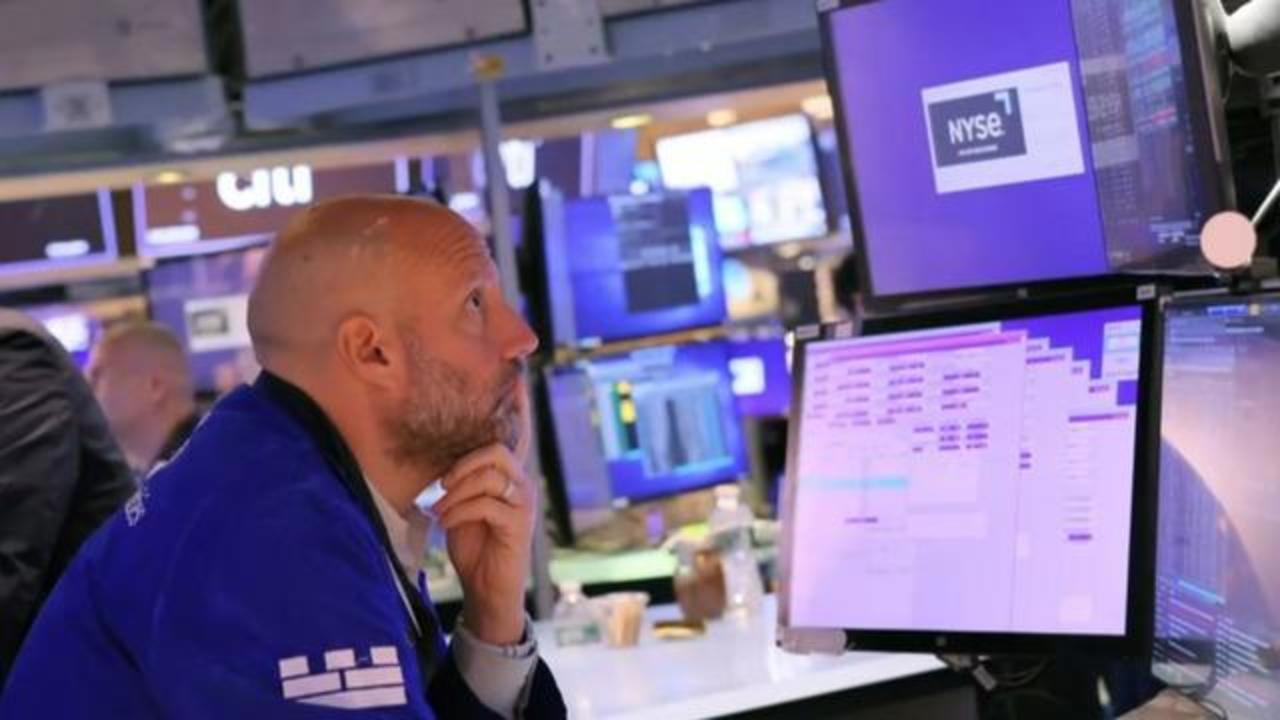Macquarie Head of Economics David Doyle joins Yahoo Finance Live to discuss the state of the U.S. economy, inflation, tipping into a recession, and the outlook for the U.S. labor market.
Video Transcript
– We’ve also got to talk about some economic data. The US GDP increased at an annual rate of 2.6% in the fourth quarter of 2022. That figure is adjusted for inflation, or known as real GDP. The reading comes ahead of the Fed’s preferred inflation gauge tomorrow. That’s core PCE.
All of this coming as bond king Jeffrey Gundlach warned earlier this week it’s only a matter of months before the US tips into a recession. Here to discuss the state of the US economy is David Doyle, Macquarie Group head of economics.
David, it seemed like it’s been only a matter of months until we dip into a recession for several months, if not a full year now at this point. So, you know, if it does and when it does happen, how shallow, mild, severe a recession should we be bracing for now that the calls are getting a little bit louder?
DAVID DOYLE: Yeah. So our view has been for some time that you will confront a recession in 2023. It looked like late last year that it could occur at the start of the year, so in the first quarter, but the data inflected higher over January and February, and we saw some improvement.
So our current baseline is that you’ll enter a recession in the third quarter of 2023. We suspect that that will be about a 1 and 1/2% peak-to-trough contraction in real GDP over the course of about four quarters or so. That’s about equivalent to what occurred in the 1990-91 episode.
So I would call it a true recession, but something that’s not quite as severe as we saw in, for example, 2008, 2009, where real GDP contracted by more than 3% and it occurred over the course of a year and a half.
– As our Myles Udland wrote in this morning’s “Morning Brief,” David, and sort of as Brad alluded to, we’ve seen this recession coming for six months for the past year– or the past nine months. In other words, and as you said, you predicted it before. This has been broadly forecast. Does that have any implications for the type of recession it could be? In other words, is there danger of talking ourselves into a recession? Or, on the flip side, do we mitigate the recession by expecting it so much?
DAVID DOYLE: Yeah, well certainly there’s heightened expectations, I would say, this time around for a recession. And it’s possible that folks like myself that are out there talking about the potential recession or part of what causes the recession to occur– there certainly is a lot of psychology that goes into these things.
We’ve seen weakness broadly across the data. So here at Macquarie, we have a suite of leading indicators that we follow and track that give us a gauge or a guide as to whether or not we should be fearful of recession. Those started to signal that a recession could be potentially on the horizon in April of last year. But it looked at that point that it would be at least nine to 12 months away.
And what’s happened is that what we haven’t seen yet is the spillover into the labor market that has historically occurred at this point in time. We still suspect that it would be– that it’s on the horizon, that it’s coming. You still see signs of that beneath the surface in the labor market data. But there’s still a range of outcomes, right?
So it could be that the recession that we’re looking for starts in the second quarter. It could be in the fourth quarter. But our base case right now is the third quarter of 2023, and that’s where the data in aggregate points us towards as being the most likely starting point.
– Well, but wouldn’t that assume that you see not only within the employment situation, not only a wave of even more headcount reductions across companies and across industries, but on the other side a wave of the open positions also being retracted at the same time? Because that would be the true tightening there on the employment situation front.
DAVID DOYLE: Yeah, so it’s layoffs. It’s a deterioration in corporate hiring. I’m sure you’ve seen some moderation in the job openings data. Some of the private-sector data shows a greater moderation than what you would get from the government JOLTS report, for example.
But we see that– you see it beneath the surface in the data. So one thing that we look for is unemployment bottom. There is unemployment trough. And it’s been a couple of months now since we’ve seen the unemployment rate on a smooth basis reach a new low. That’s typically a warning sign that a recession is on the horizon.
The insured unemployment rate, which is calculated off of the continuing jobless claims numbers which come out weekly– that’s showing a tick up of about 0.3 percentage points, again on a smooth basis from its trough. So I think you are seeing signs of a softening on the labor side. It just might take a couple of more months before we see it truly apparent in that headline data.
– We’ll be watching for it. David Doyle, thank you so much. Macquarie Group head of economics.




